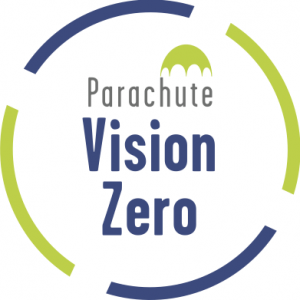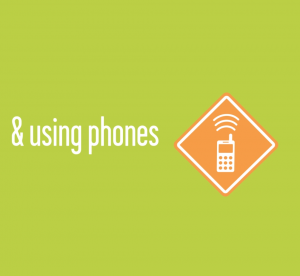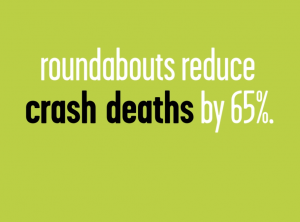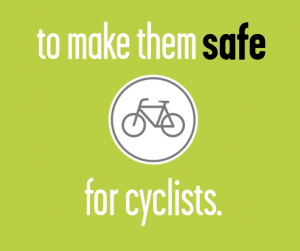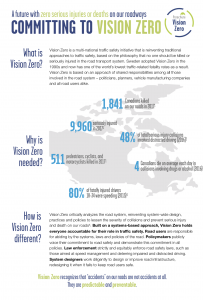A future with zero serious injuries or deaths on our roads.
Vision Zero is a multi-national traffic safety initiative, founded in Sweden in the late 1990s. It’s based on the philosophy that no one should be killed or seriously injured within the road transport system. Ultimately, the main goal of Vision Zero is to achieve zero fatalities or serious injuries on the road.
2024 campaign features cyclist Hugo Houle
Professional cyclist Hugo Houle, from Sainte Perpétue, Quebec, has donated his time to support Parachute’s road safety education outreach and has created two videos that express his support for Vision Zero.
#ChangeForGoodRoads
In 2023, Parachute and Ipsos conducted a national survey of adults in Canada (18 and older) to determine their attitudes toward road safety and knowledge about Vision Zero. Compared to a similar survey in 2023, the findings showed increased support for some measures such as reduced speed limits, particularly in residential areas, and also growing concern about road safety, with more than half saying this should be among the top five priorities for government. The #ChangeForGoodRoads campaign, which ran in late 2023 and in early 2024, encourages changed perceptions around and support of:
- Speed reduction: Built for
speedsaving lives. - Improved road design: Build our roads to guide, not collide.
- Understanding that humans make mistakes, but road design shouldn’t.
- Equity and shared road use: Safety for all – each road user needs their own space.
- Don’t call this an “accident”: So-called “accidents” are in fact predictable and preventable.
We are sharing campaign short videos, which you can find in the resources section below on this page, on social media. Thanks to Vendo Media, which donated billboard space in B.C., Alberta and Ontario for the campaign in winter 2024, and the Ministry of Transportation Ontario, which supported outreach to Ontario drivers via promoted social media posts.
Parachute’s national leadership in Vision Zero
In Canada, Parachute has taken the national lead to co-ordinate and share best practices among all the municipalities and communities seeking to improve road safety. On social media, we use the hashtag #ParachuteVZ to share information and encourage public support of Vision Zero.
Parachute Vision Zero works to:
- Create and disseminate evidence-based Vision Zero resources and best practices in road safety.
- Support urban and rural jurisdictions in their understanding and adoption of Vision Zero.
- Connect key road safety stakeholders to increase the overall awareness and effectiveness of the Vision Zero approach.
- Support data-driven approaches to road safety.
Why Canada needs Vision Zero
In 2022, collisions led to:
- 1,931 Canadians killed on our roads
- 8,851 seriously injured on our roads in Canada
- 340 pedestrians and cyclists killed
Transport injuries cost $3.6 billion a year.
Speeding, distracted driving and impaired driving
- Speeding was a factor in 25 per cent of fatal collisions, according to Transport Canada
- 20 per cent of fatal crashes involved distraction, according to Transport Canada
- 25 per cent of fatal crashes involve impaired driving, according to Transport Canada
International results for Vision Zero
Sweden made a Vision Zero commitment more than 20 years ago and, as a result:
- Traffic deaths per 100,000 inhabitants in Sweden fell by 68 per cent between 2000 and 2019
- Road deaths of children under seven have plummeted: in 2012, only one was killed, compared with 58 in 1970.
In 2015, Edmonton became the first Canadian city to adopt Vision Zero. Between 2015 and 2022, traffic-related fatalities dropped by 50 per cent and serious injuries dropped by 32 per cent, as reported by the City of Edmonton.
Vision Zero has achieved international recognition and was identified as an effective policy to prevent road traffic injury by the World Health Organization in 2004.
The Vision Zero difference
Vision Zero critically analyzes the road system, reinventing system-wide design, practices and policies to lessen the severity of collisions and prevent serious injury and death on our roads.
Grounded in the Safe System approach, Vision Zero holds everyone accountable for their role in traffic safety.
- System designers work diligently to design or improve road infrastructure, redesigning it when it fails to keep road users safe.
- Policymakers publicly voice their commitment to road safety and demonstrate this commitment in all policies.
- Law enforcement strictly and equitably enforce road safety laws, such as those aimed at speed management and deterring impaired and distracted driving.
- Road users are responsible for abiding by the systems, laws and policies of the road.
The Vision Zero commitment
Components of a strong commitment
- Action plan
- Co-operation and collaboration
- Community engagement
- Data-driven
- Equity
- Multi-disciplinary leadership
- Political commitment
- Systems-based approach
- Transparency
Key activities
- Advocacy for policy change
- Enhanced regulation and enforcement
- Raising public awareness and commitment to road safety
- Road infrastructure changes
Focus areas
- Continued leadership, collaboration and accountability among all stakeholders
- Enhancing the safety of vulnerable road users
- Leveraging innovative technology (red light cameras, automated speed enforcement)
- Improving road infrastructure for all road users
- Increasing enforcement of laws to manage safe speeds and reduce impaired and distracted driving
- Positioning road safety as a top priority in policy-making
- Strict vehicle regulation and testing
